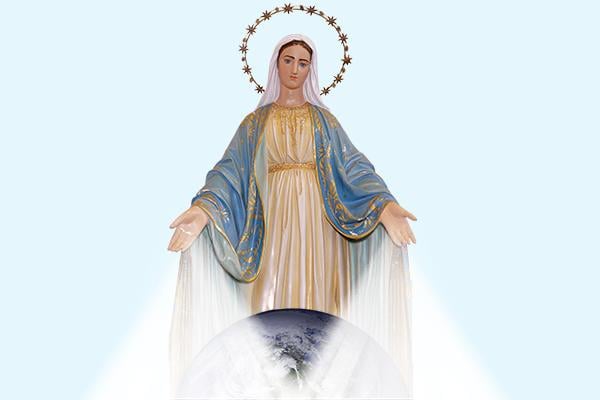
Our Blessed Mother gives us real hope. In her Immaculate Conception, we already see the total defeat of sin and Satan. Her foot crushes the serpent’s head again and again, and by the intercession of her who is “full of grace,” we too receive grace to rise above “the passions that make war within our members.”
By Br. Stephen J., MIC
“Wars and rumors of wars!”
This phrase from Mark 13 seems to characterize our time in a particular way. After both Russia’s invasion of Ukraine last year and Hamas’ attack on Israel in October, nations have taken sides. A global conflict like the Cold War appears to be looming. Violence and civil strife are rising in our cities and communities.
Amidst these escalating struggles, our Blessed Mother cries out in the world for peace … but the world is not listening. She speaks to us especially on Jan. 1, the Solemnity of Mary, the Holy Mother of God and the World Day of Peace.
Roots of conflicts
These conflicts have historical roots. The struggle for a modern, independent Ukraine goes back to nationalist movements in the 19th century; by their efforts, Ukraine emerged as an independent country in 1918. Riots from groups like Black Lives Matter claim to respond to 400 years of slavery and oppression, stretching back to the first slave ship from Africa that beached on the North American continent. And the Israeli-Palestinian conflict is one of the oldest in world history, reaching back before the time of Jesus and Mary, before King David and the Philistines, to Joshua’s conquest of Canaan circa 1400 B.C.!
But despite such intractable conflicts, Jesus tells us, “When you hear of wars and rumors of wars, do not be alarmed” (Mk 13:6). Why?
We know the primary root of all warfare: the original sin that divided the first man and woman from their original unity with one another and with God. We are not engaged in a merely political war, but a spiritual one.
Spiritual combat
The first war is within. The Apostle James reminds us, “Where do the wars and where do the conflicts among you come from? Is it not from your passions that make war within your members?” (Jas 4:1–2) We are fallen human beings, and we fall again and again, hoping against hope that one day we shall stand firm.
Yet Our Blessed Mother gives us real hope. In her Immaculate Conception, we already see the total defeat of sin and Satan. Her foot crushes the serpent’s head again and again, and by the intercession of her who is “full of grace,” we too receive grace to rise above “the passions that make war within our members.”
True peace
In Mary Ever-Virgin, we see a life of true peace: a peace that is not simply the absence of conflict, but a total inward harmony of passion, reason, and free will. Mary freely accepted the word of the angel Gabriel, freely conceived the Son of God, and freely went in haste to visit her cousin Elizabeth (see Lk 1:26-49). At her request, the Son of God performed His first miracle at Cana (see Jn 2), and she followed without faltering even to the foot of His Cross (see Jn 19). Her interior peace also produced peace in others, from the wedding guests at Cana to the disciples in the Upper Room (see Acts 1) and the early Church in Judea, Galilee, and Samaria (see Acts 9:31).
How can we live out this true peace? We return to some of Mary’s earliest recorded words: “Behold, I am the handmaid of the Lord; be it done unto me according to your word.” In these two statements, we see the beginning of true peace.
Complete trust
First, we accept Christ’s lordship in our lives. By His Cross, He has already won the victory over sin and death. We must recognize His victory and confirm it by our lives. We do this through persevering prayer, dying to self, and a complete trust in Divine Providence, by which we can praise and thank God in all circumstances. As Jesus said to St. Faustina, “Mankind will not have peace until it turns with trust to my mercy” (Diary of Saint Maria Faustina Kowalska, 300).
Second, we let His Word be done in us, especially by faithfully receiving the Sacraments. We can meditate on the Scriptures, the “sword of the Spirit” that completes the “full armor of God” in Ephesians 6. We can act as a priestly people, offering up prayer, fasting, and hardships willingly as a sacrifice in union with Christ, our High Priest. And we can do works of mercy, sharing God’s providential love with those in need.
As Mary teaches, following Christ brings peace.
Our Lady, Queen of Peace, pray for us!
{shopmercy-ad}
















